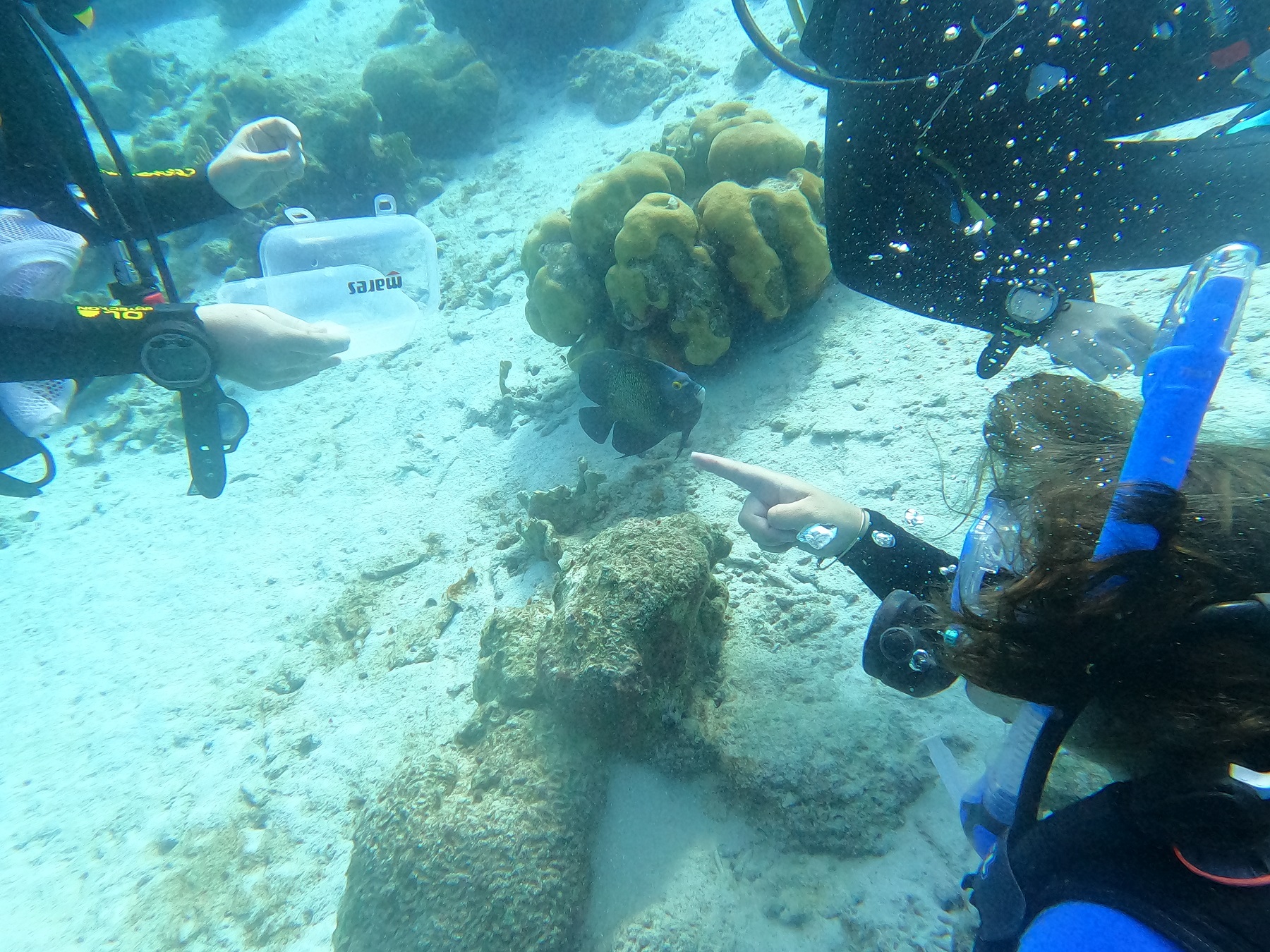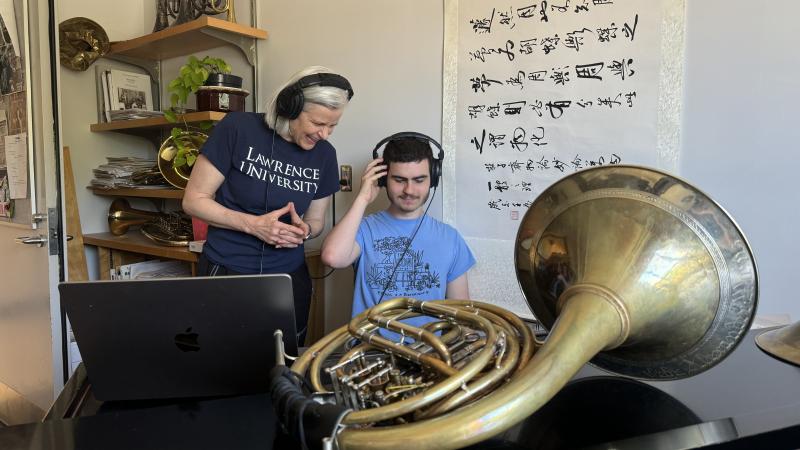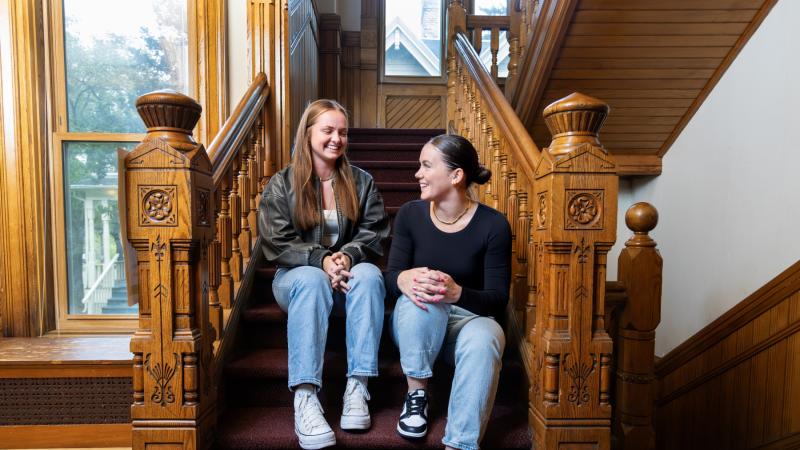Lawrence University junior Emma Moya will be spending her summer with dolphins.
The biology major from Chicago has secured an internship with the Sarasota Dolphin Research Program, where she will join other students and scientists in Sarasota, Florida, gathering and analyzing data on dolphins. It’s an opportunity her experiences in Lawrence’s marine biology program made possible.
The Sarasota Dolphin Research Program is the longest running program of its kind in the world. It involves analyzing the behavior and health of small cetaceans, and the related impact of human behavior and interactions.

Underwater photography was part of the experience for Emma Moya during last year's LUMP research trip to Bonaire.
Moya is looking forward to using her experiences with underwater photography to improve accessibility to the research, as well as learning more about marine mammal behavior and the impacts humans have on these creatures.
This is the next step in Moya’s career plans. She aspires to study marine animals as a means to improve conservation, integrate photography into research, and improve education on the important role the ocean and marine animals play in our environment.
“Sometimes we get caught up in publishing papers,” Moya said. “But it’s also important to articulate to the public what you do and ignite that fire for positive change in the next generation.”
In her college search, Lawrence quickly stood out as a place where Moya could pursue several of her passions as a first-gen student. She did just that. In addition to seeking out opportunities in marine biology, she minored in studio art and competed in two varsity sports—basketball and lacrosse.
Her love for marine biology has grown in the subsequent years, including her desire to make research more accessible to the public through photography and effective communication.
“It is important for me as a scientist to encourage the people around me and to say that you also have the power to make a difference in the world,” Moya said.
Get access to graduate-level, hands-on research opportunities to prepare you for a wide range of careers.
She first became passionate about accessibility while interning at the Milwaukee County Zoo and the Brookfield Zoo Chicago, where she grew her communication skills while giving tours and improving programs involving biofacts. She gained experience in grant writing, raising funds to improve the biofact room, and creating a safe, fun public space to learn more about the natural world.
Moya then participated in the Lawrence University Marine Program (LUMP) under the guidance and encouragement of her academic advisor, Bart De Stasio. The program has been around for almost half a century and provides students with the opportunity to analyze a coral reef habitat and then develop a group research project. Last year’s program took Moya to Bonaire, an island municipality that lies off Venezuela’s coast in the southern Caribbean. She and her peers studied fish and coral reef environments.
Learn more about the Marine Term program at Lawrence.
“I was excited to incorporate underwater photography as a way to improve communication,” Moya said. “There's not a lot of visualizations or pictures in research. All we usually have are graphs.”
Underwater photography also proved an ecological benefit, as day and night photography allowed the team to identify early stages of coral bleaching, a phenomenon that occurs in unhealthy coral.
LUMP was a highlight in Moya’s time at Lawrence, as the experience reinforced her love for marine biology.
“It’s a great opportunity to see if you want to do research and get a sense for the feel of what it’s like, not only as a marine biologist but as an educator and advocate for our oceans,” she said.



